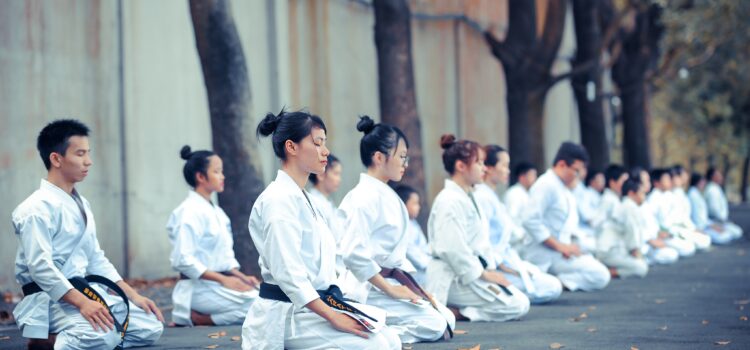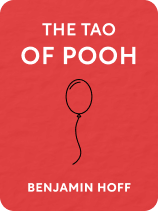

This article is an excerpt from the Shortform book guide to "The Tao of Pooh" by Benjamin Hoff. Shortform has the world's best summaries and analyses of books you should be reading.
Like this article? Sign up for a free trial here .
Who are the key Tao of Pooh characters? How do these Pooh Bear characters illustrate the concepts of Taoism?
The Tao of Pooh characters are the same as the Pooh Bear characters. But some are used to illustrate bad behaviors and others are benign.
Read on for some of the key Tao of Pooh characters and what they represent.
The Tao of Pooh Characters: What Not to Do
There are several principles that express the teachings of Taoism, which are exemplified in elements from Winnie-the-Pooh or The House at Pooh Corner. As we’ll see, the main antagonists to the Way of the Tao are knowledge and cleverness. These two characteristics are represented by Owl, Rabbit, and Eeyore and often get in the way of growth and wisdom.
Among the Tao of Pooh characters, Owl represents the Brain, or scholar. In Chinese culture, the scholar is the embodiment of knowledge and signifies the way of Confucianism. The scholar seeks knowledge simply for the sake of having it and guards it closely. The knowledge is disseminated to the general public using pretentious or overwrought language to create distance between the reader and the information. If we can’t understand what the scholar is saying, they can remain superior and unchallenged. The priority is to prove their own intelligence, not enlighten others.
Among the Tao of Pooh characters, Rabbit represents cleverness. But as seen in the example of Pooh, Rabbit, and Piglet lost in the forest, cleverness is rarely suitable for understanding the nuances of life.
Cleverness is inadequate as a method for understanding life. It is knowledge that exists on the surface of things and can be quickly dispensed as judgments or evidence of intellectual supremacy. But life changes deeply at times, and shallow cleverness cannot always keep up. When you focus on being clever, you miss many significant aspects of life, such as your Inner Nature.
An example of the failings of cleverness is when Kanga and Roo first come to the forest. At first, Rabbit sees that they are different and dislikes them. Being clever, he devises a plan to get rid of them. But as time passes, everyone sees how much Kanga and Roo have to offer and welcomes them into the group. Rabbit’s clever plan is thwarted, and he has to readjust his initial opinion because of what their Inner Natures revealed.
Rabbit’s inaccurate judgments are reminiscent of many seen in our society. We are easily persuaded into believing that differences are only skin deep, and we concoct clever remarks or ways of separating ourselves from each other. Others become manipulated or influenced by the cleverness of others because they, too, are not looking deeper than the surface. When you ignore Inner Nature, you make it easier for lines to be drawn between yourself and others. When you accept that Inner Nature exists in all of us, cleverness takes a backseat to acceptance and understanding.
Among the Tao of Pooh characters, Eeyore focuses on the negative side of everything. He uses knowledge to understand what there is to complain about and cleverness to express his pessimism. For instance, when Pooh wishes Eeyore a good morning, he replies, “Good morning, Pooh Bear, if it is a good morning, which I doubt.”
You may become stuck in the Eeyore Attitude when knowledge and cleverness fail to support the results you want. Until you are open to seeing what lies beneath the surface of life, you will never understand the true nature and power of the people and world around you and, thus, will never be satisfied.
Pooh, Piglet, and Tigger
Beyond the antagonists, there are more Tao of Pooh characters. For instance, Pooh and Piglet were sitting around deciding who to go visit one morning. Pooh suggested they visit everyone, but Piglet thought they should have a reason for visiting. Pooh came up with a reason—it was Thursday. They could simply go around wishing everyone a happy Thursday. Piglet had to admit that even though Pooh doesn’t have much Brain, things always turn out right for him.
Limitations are only weaknesses if you want them to be. Everyone has things they are not traditionally made for or that they don’t like about themselves. But if you acknowledge them, you can understand how to use them to work for you. In contrast, ignoring your limitations puts your life and those around you in jeopardy.
This can be seen with the last of the Pooh Bear characters that is a big part of The Tao of Pooh. Tigger wanted to prove that tiggers can do anything, even climb trees better than bears. He climbed to the highest branch, but he was unable to come down. Pooh and the other characters had to risk their own safety to help Tigger get down from the tree.

———End of Preview———
Like what you just read? Read the rest of the world's best book summary and analysis of Benjamin Hoff's "The Tao of Pooh" at Shortform .
Here's what you'll find in our full The Tao of Pooh summary :
- How Winnie-the-Pooh perfectly models the principles of Taoism
- The 6 principles of Taoism reflected in Pooh's adventures
- How to become Winnie-the-Pooh and unlock a magic inside of you






